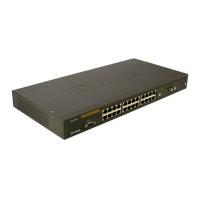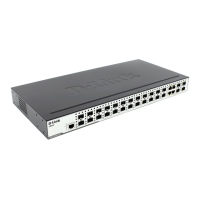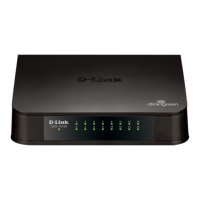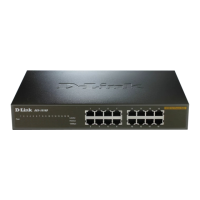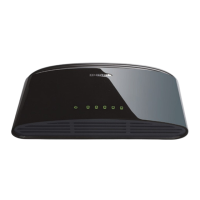DES-3010F/DES-3010FL/DES-3010G/DES-3018/DES-3026 Fast Ethernet Switch Manual
STP Port Settings
STP can be set up on a port per port basis. To view the following window click L2 Features > Spanning Tree > STP Port
Settings:
Figure 7- 15. STP Port Settings and Table window
In addition to setting Spanning Tree parameters for use on the switch level, the Switch allows for the configuration of groups of
ports, each port-group of which will have its own spanning tree, and will require some of its own configuration settings. An STP
Group will use the switch-level parameters entered above, with the addition of Port Priority and Port Cost.
An STP Group spanning tree works in the same way as the switch-level spanning tree, but the root bridge concept is replaced with
a root port concept. A root port is a port of the group that is elected based on port priority and port cost, to be the connection to the
network for the group. Redundant links will be blocked, just as redundant links are blocked on the switch level.
The STP on the switch level blocks redundant links between switches (and similar network devices). The port level STP will
block redundant links within an STP Group.
It is advisable to define an STP Group to correspond to a VLAN group of ports.
The following fields can be set:
Parameter Description
From/To
A consecutive group of ports may be configured starting with the selected port.
Cost (0 = Auto)
External Cost - This defines a metric that indicates the relative cost of forwarding packets
to the specified port list. Port cost can be set automatically or as a metric value. The default
value is 0 (auto).
•
•
0 (auto) - Setting 0 for the external cost will automatically set the speed for
forwarding packets to the specified port(s) in the list for optimal efficiency. Default
port cost: 100Mbps port = 200000. Gigabit port = 20000.
value 1-2000000 - Define a value between 1 and 2000000 to determine the
external cost. The lower the number, the greater the probability the port will be
chosen to forward packets.
87
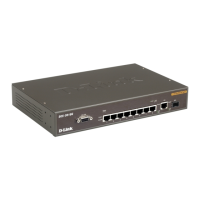
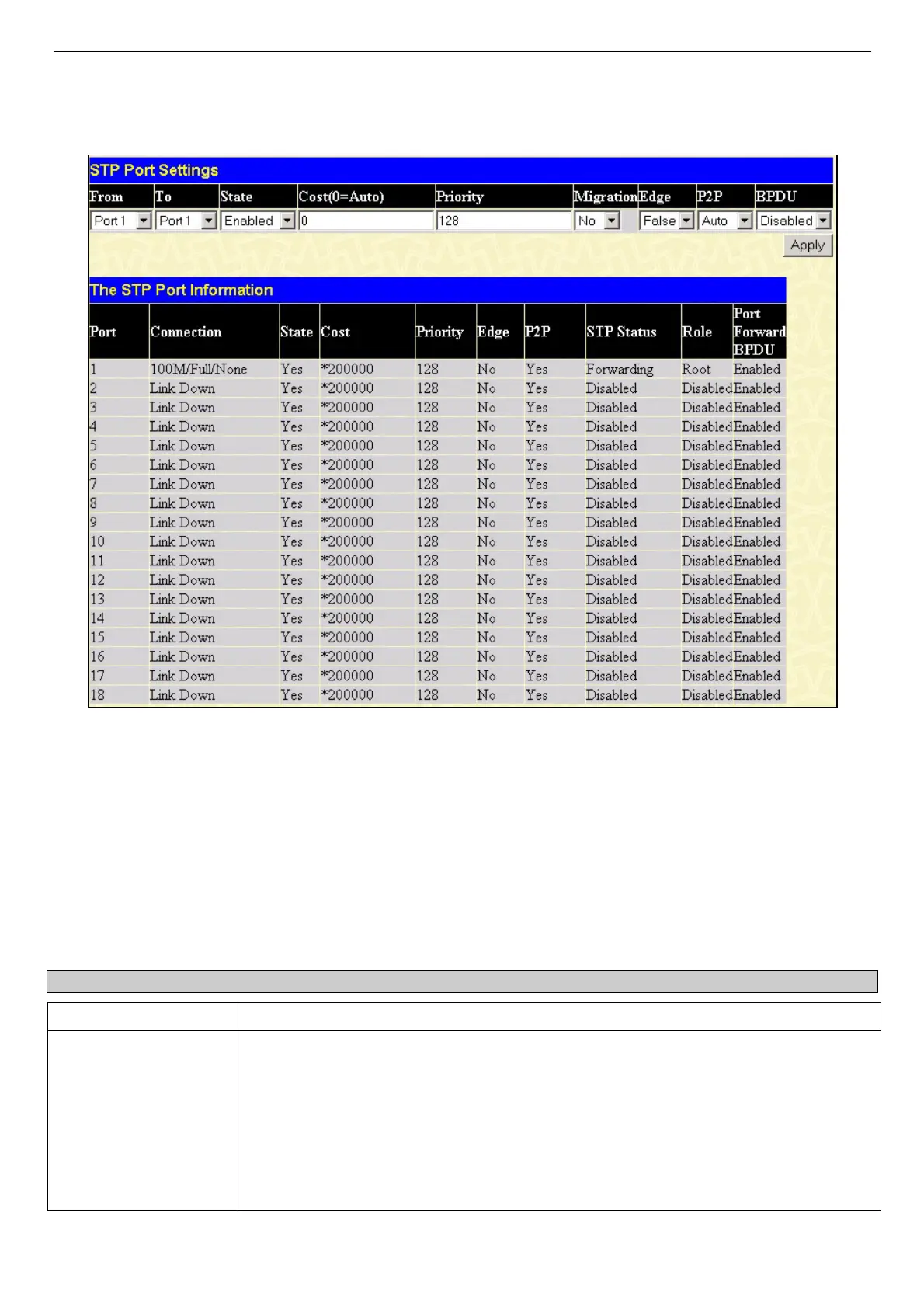